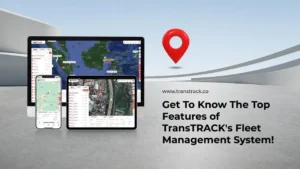Car Tie Rod: Definition, Function, and How It Works
Posted on April 23, 2024 by Nur Wachda Mihmidati
Tie rod is a part of a car’s suspension system that plays a role in connecting the steering wheel with the wheels. It is responsible for transferring the steering movements made by the driver to the wheels of the car, thus allowing the car to turn properly.
The tie rod usually consists of a long metal rod with ends that have ball joints or other joints that allow flexible movement. There are two main types of tie rods: inner tie rods and outer tie rods. The inner tie rod is directly connected to the steering wheel or gear rack, while the outer tie rod is connected to the steering knuckle or wheel section.
In other words, the tie rod is essential for maintaining the stability and control of the car during driving, especially when performing turning or twisting maneuvers. Disruption to this part can result in issues such as unusual vibrations, loss of control, or even loss of the ability to steer the car properly. As an important part of the steering and suspension system, proper maintenance and repair of the tie rod is crucial to the safety and overall performance of the car. Check out the following article TransTRACK for further explanation!
Car tie rod function
The tie rod has several main functions in the car’s steering and suspension system:
Transferring Steering Motion
One of the main functions of the tie rod is to transfer the movements made by the driver through the steering wheel to the wheels of the car. This allows the car to turn or change direction according to the instructions given by the driver.
Front Wheel Front Distance Adjustment
This part of the suspension system helps to adjust the distance and angle of the car’s front wheels. This is important to maintain optimal wheel geometry and to ensure stability and performance while driving. If the tie rod is not functioning properly, it can cause problems such as wheel misalignment or improper caster angle.
Stability and Control
Tie rods help maintain the stability and control of the car while driving. By connecting the steering system to the wheels of the car, this part of the suspension system ensures proper response and fine control when performing maneuvers such as turning, driving on winding roads, or avoiding obstacles.
Although the tie rod does not directly act as a vibration damper, it still plays an important role in maintaining the stability and performance of the car’s suspension. When the tie rod is damaged or worn, it can cause unusual vibrations or loss of control while driving, which in turn can reduce comfort and safety during the journey. Therefore, it is important to check and maintain the tie rod regularly to ensure that the car continues to operate properly.
How car tie rods work
How a tie rod works in a car is closely related to its main function in the steering and suspension system. Here is how the tie rod works in general:
Transferring Steering Motion
This part of the suspension system is connected to the steering part, either the steering wheel or rack and pinion, depending on the type of car steering system. When the driver turns the steering wheel, the movement is transferred through the tie rod to the steering knuckle or wheel section.
Changing the Wheel Angle
When steering motion is transferred through the tie rod, it causes a change in the angle of the front wheels. This change in angle allows the car to turn or change direction according to the instructions given by the driver.
Optimizing Wheel Geometry
This part of the suspension system also helps maintain optimal wheel geometry as the car moves. This includes keeping the caster, camber, and toe-in/toe-out angles within the right ranges. Proper wheel geometry ensures stability, comfort, and optimal performance of the car while driving.
Provides Structural Rigidity
This part of the suspension system also contributes to the structural rigidity of the car’s steering and suspension system. It helps maintain the stability and safety of the car, especially when encountering high stresses and loads during driving.
Dealing with Stresses and Loads
This part of the suspension system must be able to handle the stresses and loads generated by steering movements and other forces when the car is moving. Therefore, the material and design of the tie rod must be sturdy and resistant to the stresses exerted.
Overall, the tie rod is an important part of a car’s steering and suspension system that allows the driver to control the direction and move the car safely and efficiently. The tie rod’s role in maintaining proper wheel geometry and providing good response to steering movements makes it a key component in the overall safety and performance of the car.
Causes of tie rod damage and their characteristics
Tie rod damage can be caused by several factors, and the characteristics of the damage can vary depending on the severity and type of damage. Here are some common causes of tie rod damage and their characteristics:
Causes of Tie Rod Damage
The following are the causes of Tie Rod damage:
Abrasion
Repeated friction between the tie rod and other components can lead to wear of the tie rod surface, especially at the ball joints or other joints. This can be caused by poor road conditions, extreme use, or lack of adequate lubrication.
Impact
Strong or frequent impacts can damage tie rods. This can happen as a result of an accident, hitting bumps or potholes on the road, or due to extreme off-road use.
Corrosion
Corrosion or rust of the tie rod can damage its structural integrity and reduce the strength of the material. Factors such as exposure to water, salt, or other corrosive substances can accelerate this corrosion process.
Normal Wear and Tear
Over time and use, tie rods are subject to normal wear and tear. This can happen to the ball joints or other parts that move frequently.
Characteristics of Tie Rod Damage
The following are the characteristics of Tie Rod damage
Vibration or Rattling when Driving
Damage to the tie rod often causes unusual vibrations or rattles to be felt in the steering wheel or suspension parts of the car when driving. This can happen especially during turns or when traveling on uneven road surfaces.
Changes in Steering Performance
A damaged tie rod may result in changes in steering performance, such as a “loose” or “heavy” feeling when turning the steering wheel, or difficulty maintaining directional control of the car.
Improper Wheel Angle
Damage to the tie rod can cause unbalanced wheel angle changes, such as excessive toe-out or toe-in. This can lead to uneven tire wear or driving instability.
Leaking Lubricant or Grease
If there are signs of lubricant or grease leaking from the tie rod ball joints, it could be an indication that the seals or bearings inside the tie rod are damaged, resulting in leakage.
Looseness or Broken Joints
If there is significant looseness or breakage of the ball joints or other joints on the tie rod, it indicates serious damage and the tie rod may need to be replaced immediately.
Detecting the signs of tie rod damage quickly and making appropriate repairs is important to maintain the safety and performance of the car. If you suspect any damage to the tie rod, it is advisable to have it checked by a professional mechanic immediately to prevent potentially more serious problems.
With its important role in a car’s steering and suspension system, it’s no surprise that the tie rod is a vital part that needs to be maintained and checked regularly. To ensure optimal performance of your car, don’t neglect tie rod maintenance.
With the help of the latest technology, such as TransTRACK’s Vehicle Maintenance System, you can easily keep track of scheduled maintenance and inspection of tie rods and other components. With automatic reminders and condition monitoring, you can ensure that your car’s tie rods are always in the best condition possible, enhancing the safety and comfort of your ride.
Don’t let tie rod damage disrupt your driving experience. Immediately take advantage of TransTRACK for better car maintenance and carry out regular checks on the tie rod and your entire car system. Keep your car in top shape and ready to accompany your every trip!
Recent Post
Topic :
vehicle enginevehicle maintenance
 Bahasa Indonesia
Bahasa Indonesia









